Background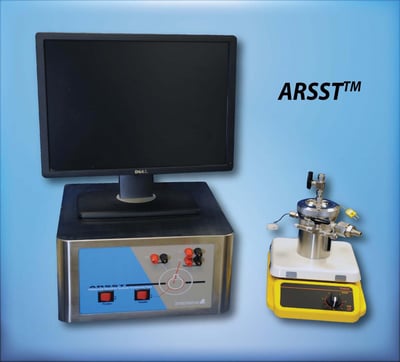
Fauske & Associates' (FAI) Advanced Reactive System Screening ToolTM (ARSST) is a low thermal inertia calorimeter used to obtain critical upset process design data. FAI offers the ARSST along with options for customization such as a high-pressure vessel and flow regime detector, as well as commonly used items such as test cells, heaters, glands
The
The
Benefits
The
Features
Applications
Background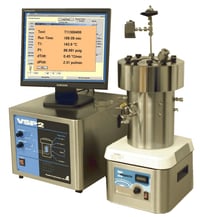
Fauske & Associates' (FAI) Vent Sizing Package 2™ (VSP2™) is a low thermal inertia adiabatic calorimeter used for process hazard characterization that utilizes state-of-the-art DIERS technology to obtain critical upset process design data. It is the commercial version of the original DIERS bench scale apparatus. At FAI, we not only utilize the VSP2TM in our fully equipped hazards laboratory but we also manufacture and sell the calorimeter for use by our clients.
Its versatile and innovative design allows the VSP2TM to simulate upset (abnormal) conditions which might lead to a runaway chemical reaction (e.g. loss of cooling, loss of stirring, mischarge of reagents, mass-loaded upset, batch contamination, fire exposure heating, etc). Resulting temperature and pressure rise rates are directly scalable since it is a low thermal inertia (phi-factor) apparatus.
The VSP2TM typically utilizes a sample size of 40-100 grams in a lightweight metal test cell with a volume of approximately 120 ml. The test cell is surrounded by a heater which is used to maintain adiabiatic conditions during an experiment. This test cell and heater assembly is placed in a 4L containment vessel. Test are typically performed as a closed system, so that vapor pressure data can be measured.
Benefit
The VSP2TM utilizes established DIERS technology to identify and quantify process safety hazards so they can be prevented or accommodated by process design. Test data includes adiabatic rates of temperature and pressure change which, due to the low thermal inertia, can be directly applied to process scale to determine relief vent sizes, quench tank designs and other relief system design parameters related to process safety management. Adiabatic data obtained with the VSP2TM can be used to characterize reactive chemical systems and consequences that could occur due to process upset conditions.
Features
The versatile configurations offered by the VSP2TM design directly simulates process conditions including:
Applications
Use of the VSP2TM can help users obtain complete chemical system data such as:
FAI has also created the FERST software to allow users to implement practical emergency vent sizing using industry recognized methodology. It applies DIERS methodology (including the Leung-Omega and Fauske methods) for reactive chemistry and API 520/2000 or NFPA 30 for non-reactive systems.
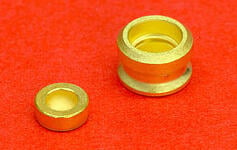

M20 - 10 μm gold plating for F20 - The sample compartment is
improved corrosion resistance exclusively steel (DIN 1.4435)
Background
Fauske & Associates (FAI), an industry leader in thermal hazards process safety testing is proud to partner with another industry leader, SWISSI Crucibles, to set standards for safety in thermal analysis. SWISSI is known worldwide for their crucibles and FAI is the exclusive North American Distributor for their patented two-piece gold and stainless steel high pressure crucibles (the M20 and F20, respectively.)
Features
Tested up to 200 bar (2900 psi) at 400°C (tested with supercritical water pressure) SWISSI Crucibles are:
• Compatible
• Reliable
• Simple to use
• Pressure resistant
SWISSI M20 and F20 Crucibles are:
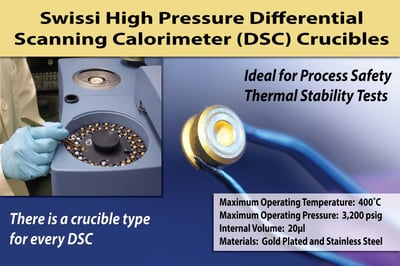
Visit the Fauske Store to shop for calorimeter spares and consumables.
Background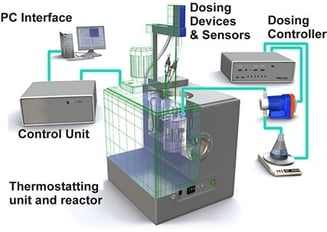
The CPA or Chemical Process Analyzer from ChemiSens brings reaction calorimetry to the next level. It is a complete, pre-calibrated, precision tool for analyzing chemical processes. The CPA202 retains the versatility of a laboratory reactor while including the techniques and measurements that are essential to effective process development. The absolute heat production from the process is presented on-line in real time without subjective interpretations of calibration pulses or unknown baselines. Everything from stirrer torque to condenser power is accounted for to give the truest measure of heat flow.
Benefits
Features

Expertise /Solutions
Fauske & Associates (FAI) is the sole distributer in North America for ChemiSens Reaction Calorimeter systems and we operate one of the units in our testing laboratory for contract testing and customer demos.
The C80 Calorimeter is manufactured by Setaram. Some of the key benefits of the C80 include:
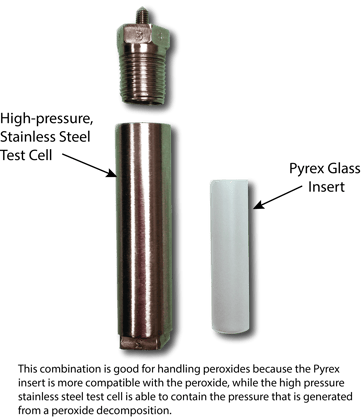
The C80 is a fantastic addition to our toolkit here at FAI as it nicely complements other instruments in our lab and enhances the ability of our engineers to offer practical and customized solutions to unique process safety issues dealing with thermal hazards and thermal stability. When you are considering a provider for your own process safety needs in this area make sure that they too have a robust toolkit with which to effectively address your concerns.
Background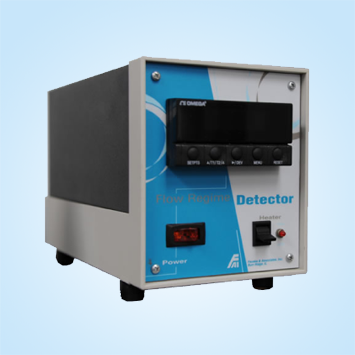
Knowledge of the prevailing flow regime during emergency venting of a runaway chemical reaction is essential in order to determine a realistic but safe emergency relief system design. It is not possible to predict the foaming behavior from physical properties alone. Since flow regime characterization methods for actual runaway conditions are not available, the DIERS practice has usually been to design for “foamy” conditions, i.e. homogeneous vessel conditions, which is a conservative assumption. Considering that the occurrence of “foamy” versus “non-foamy” conditions is very sensitive to impurities, minute changes in concentration levels and other factors, the flow regime characterization needs to be performed under actual runaway conditions coinciding with the relief venting process.
The flow regime detector sensor is comprised of a small immersion heater and an attached thermocouple that is positioned in the upper free board space of the test cell. (For Flow Regime determination tests, the test cell is only about 1/3 full).
Prior to externally heating the chemical sample, power is supplied via an auxiliary control box to the internal heating coil to establish an elevated (baseline) sensor temperature. This baseline temperature should be well above the anticipated boiling (tempering) temperature of the sample. The detector operates on the principle that if the flow regime following the onset of boiling is non-foamy, then the detector thermocouple (TC2) will continue to measure a temperature well in excess of the sample temperature (TC1).
Benefits
Fauske & Associates (FAI) offers a Flow Regime Detector (FRED) for use in conjunction with the ARSSTTM and VSP2TM calorimeters to distinguish between foamy and non-foamy runaway reactions. Relief systems for non-foamy systems may be more realistically designed by treating the two-phase discharge flow as churn-turbulent rather than homogeneous.
Features
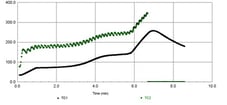
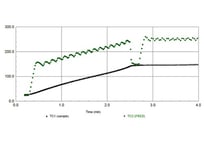
Background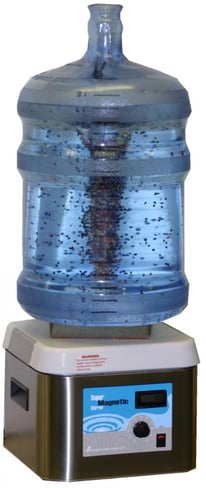
There are many bench top magnetic stirrers on the market today however the majority of them lack the capability to stir viscous or multiphase systems.
Benefit
As a means of bridging this gap in capabilities, Fauske & Associates (FAI) developed our Super Stirrer™ to support stirring operations under both high temperature and high pressure conditions, as well as provide reliable stirring for viscous and multiphase mixtures. FAI offers the Super Stirrer™ in two forms: as a benchtop unit for laboratory use and also as remote stirring unit for operation in caustic environments.
Specifications
Features
Fauske & Associates (FAI) has updated its emergency relief system tools with FERST software powered by CHEMCAD. FERST is the complete package combining the practical and easy-to-use interface and calculation methods from FAI’s PrEVentTM (Practical Emergency Vent Sizing) software, the direct use of temperature rise rates from low ф-factor calorimetry data from FAI’s VSDS (Vent Sizing Dynamic Simulation) software and the material property, thermodynamic, and software development expertise from ChemstationsTM.
GUI functionality improvements
Access to Chemstations technical support
Materials properties
Design relief systems
Rate relief systems using a static approach
Rate relief systems using a dynamic approach
FERST Powered by CHEMCAD - A Staged Approach to ERS Design
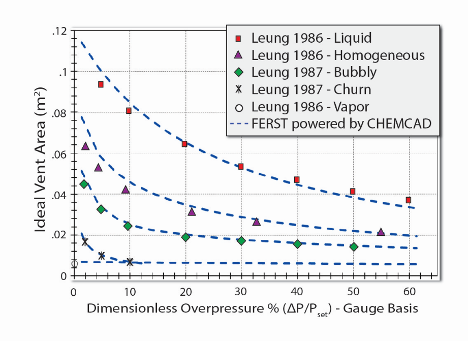
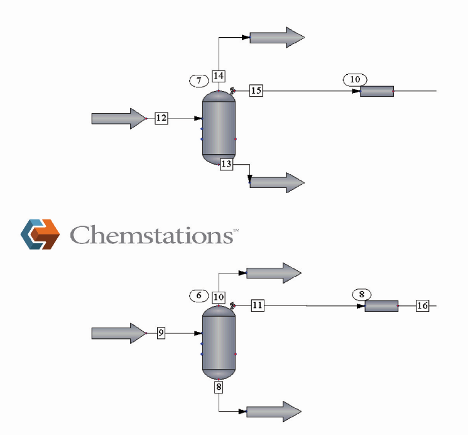

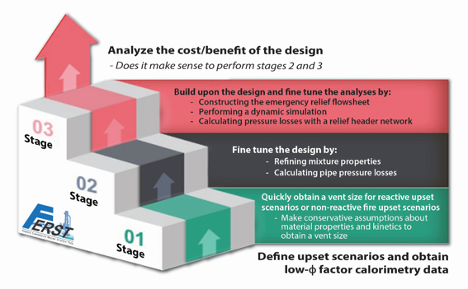
Using FAI developed FATETM software, we can calculate temperatures, pressures, flow rates and compositions for fluids, 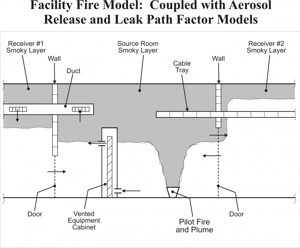
Please also see:
Fire Modeling & Cable Selection Analysis
Reactor Auxiliary Building Analysis
Fukushima - Related Engineering
Waste Management and D&D Process Engineering
Background
Critical process safety and thermal stability parameters (TMRad, SADT, etc.) can be determined quickly and reliably from a modest amount of calorimetry data by using AKTS-Thermokinetics software. This software utilizes an advanced differential isoconversional kinetic techniques for the precise modeling of runaway chemical reactions. From just a few Differential Scanning Calorimetry (DSC) tests, run in either dynamic or isothermal mode, model-free kinetics can be extracted. The model-free kinetics can then be used to predict reactivity of varying quantities of material in different thermal environments. Verification of the model can be completed by a comparison of the measured and calculated reaction profiles, either rates or conversion, under both non-isothermal and isothermal conditions. Further validation can be performed using a single adiabatic calorimetry experiment.
Benefits
Features
AKTS-Thermokinetics software package facilitates kinetic analysis of DSC, DTA, TGA, and TAM data for the study of raw materials and products within the scope of research, development and quality assurance.
Advanced kinetic analysis:
Prediction of the reaction progress and thermal stability of materials under any temperature mode:
Fauske & Associates (FAI) has experience utilizing AKTS-Thermokinetics software for kinetic analysis and is and also an authorized distributor. See our Thermal Stability page.
Modular Accident Analysis Program (MAAP) Version 4 and Version 5 (EPRI owned and licensed computer software)
Background 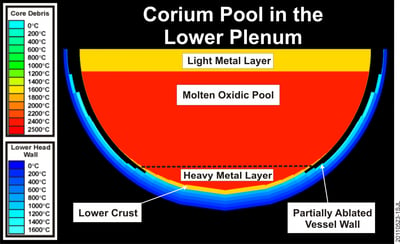
The Modular Accident Analysis Program (MAAP) Version 4 and 5 - an Electric Power Research Institute (EPRI) owned and licensed computer software - is a fast-running computer code that simulates the response of light water and heavy water moderated nuclear power plants for both current and Advanced Light Water Reactor (ALWR) designs. It can simulate Loss-Of-Coolant Accident (LOCA) and non-LOCA transients for Probabilistic Risk Analysis (PRA) applications as well as severe accident sequences, including actions taken as part of the Severe Accident Management Guidelines (SAMGs). There are several parallel versions of MAAP4 for BWRs, PWRs, CANDU designs, FUGEN design and the Russian VVER PWR design.
Originally developed by Fauske & Associates (FAI) as part of the Industry Degraded Core Rulemaking (IDCOR) program, FAI has developed and maintained the code under the sponsorship of (EPRI) and the MAAP Users Group (MUG). MAAP5, MAAP4 and its predecessor, MAAP3B, have been used by the nuclear industry throughout the world for more than two decades as an engineering tool to support PRA and severe accident analysis.
Background
The Modular Accident Response System (MARSTM) is a software suite that monitors and predicts potential future states of a nuclear power plant under abnormal and accident conditions. MARSTM is used to:
MARSTM software was created by Fauske & Associates (FAI), a Westinghouse affiliated company, under the Westinghouse/FAI Quality Assurance (QA) program, and has been in use by customers for nearly 20 years.
Description
The MARSTM software suite uses engineering software to predict future plant conditions much faster than in real time, predicting many hours ahead in just a few minutes. MARSTM can operate either online or offline. In the online mode of operation, the system gathers information from the plant process computer (or related system) to obtain a snapshot of the plant conditions. This snapshot includes information such as temperatures, pressures and water levels throughout the primary, secondary (for pressurized water reactors) and containment systems.
The MARSTM suite includes:
The MARSTM software suite uses the Modular Accident Analysis Program (MAAPTM) along with customized and industry-standard software to support the MARSTM applications. MAAPTM is a product of the Electric Power Research Institute (EPRI) developed by FAI under the Westinghouse/FAI QA program. MAAPTM performs detailed simulation of plant conditions, including severe reactor accident behavior, core melt, and fission product release and transport. The MAAPTM code has been used extensively throughout the world to perform Level 2 probabilistic risk assessments as well as support plant activities, and it is regularly used to address emergent issues. The MAAPTM models are specifically tuned to represent nuclear power plant configuration and emergency systems. MAAPTM QA includes peer review and validation against experiments and plant transients.
Benefits
The MARSTM software suite provides the user with an engineering tool to evaluate the current and potential future plant states. The MARSTM predictors can, for example, model the loss of a given safety system to determine its effect on overall accident progression. The predictors act as an educated “crystal ball” to look into the future of the plant state, including the ability to model operator actions per plant procedures.
The ability to use online or offline plant data provides a robust tool to properly assess control and mitigation of upset conditions along with the ability to forecast potential radiological consequences. MARSTM provides an educated evaluation as to whether it is better to shelter or evacuate during a potential radiological consequence.
Experience
The first MARSTM suite was developed in 1987 in the United States. Subsequent to the initial development, MARSTM projects have been developed for the Far East and Europe. The most active (and still current) MARSTM installation started in 1992 with Consejo de Seguridad Nuclear (CSN), the Spanish nuclear regulatory agency, based in Madrid, Spain. CSN now has active online MARSTM models installed for all operating Spanish nuclear power plants.
By Dr. Jim Burelbach, CCO, Fauske & Associates, and Howard Heil, President, Heil2O Water Solutions
Water is a precious natural resource and a valuable commodity that is fundamental to life all over the world. But according to the American Society of Civil Engineers, our own water piping distribution networks in the US are graded “D-minus” meaning they are a near “Fail”.
Many of the more than one million miles of water main pipes in the US were installed in the early to mid-20th century with an expected lifespan of 75 to 100 years––and they are breaking at a current average rate of 240,000 annually.* If we do nothing, this number will likely rise as the aging pipes continue to deteriorate due to conditions such as:
Even when pipes show no sign of deterioration, they will break when they are unable to withstand the rapid loading transients (water hammer events) caused by rapid starting and stopping of water flow to satisfy the needs of water users.
The American Water Works Association (AWWA) estimates it will cost $1 trillion to maintain and expand service of US water mains to meet the projected water demands over the next 25 years. With the arrival of COVID-19 and a growing gap in funding, municipalities may be tempted to focus on priorities other than keeping up with the operation and maintenance of those essential pipes that transport clean water to homes, industries, hospitals, etc.
Main line breaks are especially costly and time-consuming for municipalities and dangerous for their work force. Flooding, road closings, water outages and boil-orders can also put residents and businesses at risk. For the sake of both public health and economic growth, utilities need to explore, when possible, less disruptive and less costly alternatives to total replacement of water mains.
Understanding water hammer could lead to a solution
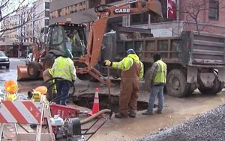 Nuclear power plants (and many other industrial processes) use water in a variety of ways, basically to create steam heat that generates electricity and again to condense the steam once it has delivered energy to the turbine.** Thermal-hydraulic testing conducted by Fauske & Associates (FAI) in support of nuclear safety analyses has illustrated the potentially destructive effects of a hydraulics-based phenomenon called water hammer on supply pipes. We’ve also seen how suppressing the surge that leads to water hammer helps protect those same pipes from reaching their breaking point.
Nuclear power plants (and many other industrial processes) use water in a variety of ways, basically to create steam heat that generates electricity and again to condense the steam once it has delivered energy to the turbine.** Thermal-hydraulic testing conducted by Fauske & Associates (FAI) in support of nuclear safety analyses has illustrated the potentially destructive effects of a hydraulics-based phenomenon called water hammer on supply pipes. We’ve also seen how suppressing the surge that leads to water hammer helps protect those same pipes from reaching their breaking point.
Could surge suppression then be a solution that, applied to the water industry, greatly prolongs the life of its infrastructure, saving perhaps millions of dollars and avoiding unnecessary water loss?
First, let’s look at what causes water hammer. A water distribution system typically consists of miles of pipes that are obstructed by the bends and T’s that are needed to supply water to the customers. Water systems also have valves and hydrants, with many of the valves being operated by high-volume users such as manufacturers, car washes or fire suppression systems.
When water is flowing at high velocity and a valve is activated quickly, or the water encounters a bend or a T, it is forced to slow down and is then followed by a surge forward with even greater momentum. These uneven pressure changes within the water utility system create a cavitation which leads to water hammer. The water, under immense pressure, seeks the weakest point in the system to find release. That’s when a main break is likely to occur.
Compare this with what happens in another type of liquid transport system. The petroleum industry distribution piping uses 10 times greater pressure (between 800 and 1200 psi) than the water industry and yet experiences very few main breaks. That’s because instead of using the T’s and 90° angles in pipes to serve multiple homes and industries, petroleum industry systems can be designed with more gradual transitions and they have far greater control of their valves.
It’s a common belief that cold temperatures cause mains to break. While we’ve proven that cold temperature (38o F or below) can make cast iron pipes brittle and cause breakage, cold weather isn’t the only factor. Houston averages only 18 days with temperatures of 32o F or less and yet it experiences more main breaks per mile than any other US city.
These examples––the petroleum industry with few main breaks and a warm climate city with many breaks––provide evidence that it’s primarily water hammer/cavitation that is causing much of the damage to our water infrastructure.
Taming water hammer with surge suppression
Engineers from FAI began exploring the role of surge suppression in preventing water hammer in the nuclear industry in the 1990’s. But before that, a public works superintendent for the rapidly growing Village of Burr Ridge, Illinois, had been noticing early in his career how, with increasing demand for water, more main breaks occurred. After witnessing the repeated risk of water contamination and endangerment of workers’ lives, Howard Heil, a farmer’s son who grew up solving problems and making his own repairs, observed a pattern. He was especially intrigued by where main breaks did not occur-–near elevated tanks and pumping stations. He also thought about what he knew about residential plumbing. A banging noise means the water system is missing an air-filled volume that absorbs the sudden change in pressure caused by turning water on or off quickly, as often happens in a kitchen, bathroom or laundry room.
In 1994, Heil began to introduce the same principle of surge suppression that he had noticed with water tanks and in residential plumbing to the Burr Ridge water system. While at a main break site, he observed how the pipe broke. If it was circumference break, which looked like a pencil breaking, or a blow-out break, which is when the pipe split open, he and his crew planted a stainless steel air encapsulation tank as part of the repair work. (He learned that corrosion breaks, evidenced by a rusty hole, can’t be as easily prevented with surge suppression but could be postponed by it.) The result of his “Johnny-Appleseed” style work was that Burr Ridge experienced dramatically fewer breaks and less water loss, prolonging the life of their water distribution system and delaying unpopular special tax assessments on residents and businesses.
Science based backing of Heil's theories
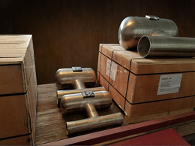 In the early 1990’s, Heil came to FAI’s office which is located in Burr Ridge next to a water plant he supervised. While the purpose of his visit was to service a water meter, he began a conversation with employees about how he had installed a surge suppression device at the water plant next door. He shared his findings about how the device would mitigate the water hammer that, in this case, was increased by activation and deactivation of the water supply due to a recently added well.
In the early 1990’s, Heil came to FAI’s office which is located in Burr Ridge next to a water plant he supervised. While the purpose of his visit was to service a water meter, he began a conversation with employees about how he had installed a surge suppression device at the water plant next door. He shared his findings about how the device would mitigate the water hammer that, in this case, was increased by activation and deactivation of the water supply due to a recently added well.
Engineers from FAI became intrigued with Heil’s work and he immediately recognized that FAI’s technical knowledge and water hammer demonstration lab were complementary to his own practical experience. FAI’s team worked with Heil and a manufacturer to develop an early model of the product, an informational brochure and even a tabletop display to demonstrate the science behind surge suppression. FAI also joined Heil at some of his early continuing education seminars to help “teach the teacher” in educating the water industry about the power of surge suppression to protect their mains.
In 1995, one of Fauske & Associate’s founders, Dr. Robert E. Henry, a mechanical engineer and widely recognized expert in two-phase flow, concluded that surge suppression could greatly extend the life of water distribution systems and reduce maintenance costs. You can read his white paper report here.
Heil had some success convincing other municipalities in and outside the Chicago area to try the surge suppression that worked so well for the village of Burr Ridge. He would follow up with them later to add data to his findings and develop ways to continuously improve his product. Early adopters include DuPage County Water, Oak Park and Hickory Hills, all in Illinois; plus, Ann Arbor, Michigan, and Green Bay, Wisconsin, and a handful of others throughout the country who have been using surge suppression for 20 years or more. Heil’s follow up conversations confirm that these systems are experiencing fewer main breaks than before they installed the surge suppression devices.
Opening up to "out-of-the-box" thinking
Heil did not have the resources to keep detailed records and quantify the results. But he insists that if municipalities did so, they’d learn (like he did) where to place surge suppressors to calm water hammer and avoid the damage it causes to any vulnerable water distribution systems.
Technology to measure exactly when and where peaks and high pressures occur in liquid transport has long existed. Today this information can easily be viewed and tracked via computers. Why couldn’t this data be used to more quickly and efficiently determine problem areas and proactively prevent a potential disaster? This may even be an opportunity to apply available machine learning technology from FAI parent Westinghouse LLC.
It is unclear why surge suppression is not being used more broadly to protect our nation’s essential but near-failing water distribution systems. Heil continues to advocate for his patented water solution and educate himself further, including attending one of FAI’s water hammer training courses, where he was the only attendee from a water utility organization. For him surge suppression is a common sense, no-brainer solution to a growing, worrisome problem. He believes that, unfortunately, the water industry is slow to change and too many decision-makers are stuck in the status quo.
But the need for life-sustaining water isn’t going away. Essential infrastructure will continue to deteriorate as we struggle to regain economic stability and find the funding needed to operate and maintain water supply systems. One way to move forward is to learn from testing and scaling innovations such as surge suppression that would cost much less than entirely replacing mains and could save millions of dollars. In Heil’s own words, “Prove to me it doesn’t work.”
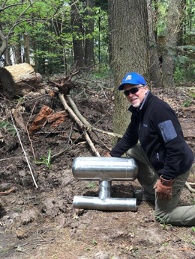
Fauske & Associates (FAI) is pleased to support Heil2O Water Solutions in broadening the application of proven surge suppression technology.
For more information on surge suppression or water hammer issues in municipal water systems please contact Fauske & Associates info@fauske.com, or visit heil2owatersolutions.com.
Sources:
* https://www.infrastructurereportcard.org/cat-item/drinking-water
** https://nuclear.duke-energy.com/2014/01/22/importance-of-water-at-nuclear-plants
Under certain conditions, a vortex – a spiraling motion of fluid within a limited area – can form at suction locations in liquid tanks and other fluid reservoirs, such as the containment sump and the refueling water storage tank (RWST) in a nuclear power plant. If a vortex forms it could cause a pump to lose its
prime and stall.
Although an increase in fluid submergence levels and/or a modification of operational performance can reduce the possibility of vortex formation; a preferable alternative is to utilize the VEXTORTM vortex suppressor. Once installed at a suction intake, this tool will prevent vortices from forming.
Features
• The stainless steel (or other material of choice) VEXTOR vortex suppressor is custom designed and configured to meet each customer’s particular needs and specifications
• Once fabricated, VEXTOR is run through a battery of tests, including a demonstration at our facility to provide evidence of satisfactory performance and proper suction pipe configuration
• The VEXTOR is often designed in modules so that the large complete unit can fit through manway access holes and the components can easily be installed in an empty or full tank
• VEXTORhas been designed and manufactured under a Nuclear Quality Assurance program that is compliant with 10CFR50 Appendix B and ISO accreditations
Benefits
Installing VEXTOR will suppress vortex formation, thereby improving the operation of fluid tanks and reservoirs under a much wider range of levels and operational conditions. By preventing the formation of swirl flows that cause vortices, air intrusion and degraded pump operations will be minimized and even prevented altogether. When properly sized and installed, VEXTOR eliminates gas intrusion caused by
vortices.
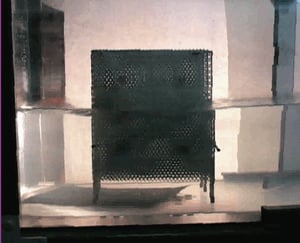
VEXTOR on top of suction intake with a large induced circulation in the approach flow
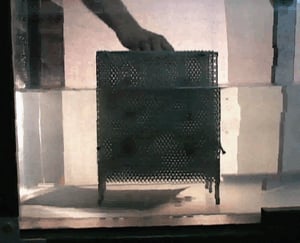
VEXTOR being removed from the suction intake in the presence of the induced circulation in the approach flow
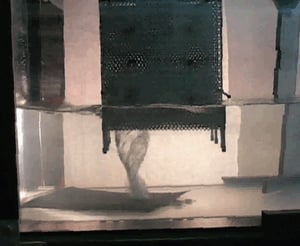
VEXTOR near the liquid pool surface:
notice a strong vortex forming
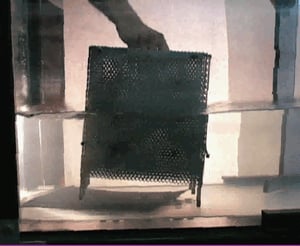
VEXTOR returns to the top of the suction intake and eliminates vortex
Take Your Cable Condition Monitoring Program to the Next Level
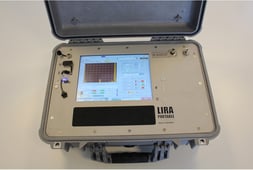
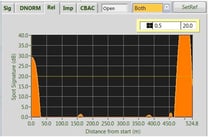
 Advantages:
Advantages:
• In-situ cable testing performs local and global cable assessments
• Test all cable sizes from low and medium voltage cables to the high voltage cables used in the transmission and distribution industries
• Accommodates both shielded and unshielded cables (two or more metallic cores)
• Damage-free testing methodology using a very low voltage signal (5 VDC or less)
• Short test time – less than 5 minutes (evaluation can be done elsewhere later)
• Test inaccessible/buried/underground cables
• No need to determinate de-energized connections (breakers open)

LIRA® is a product and registered trademark of Wirescan AS
Fauske & Associates (FAI) is the North American representative for LIRA®
